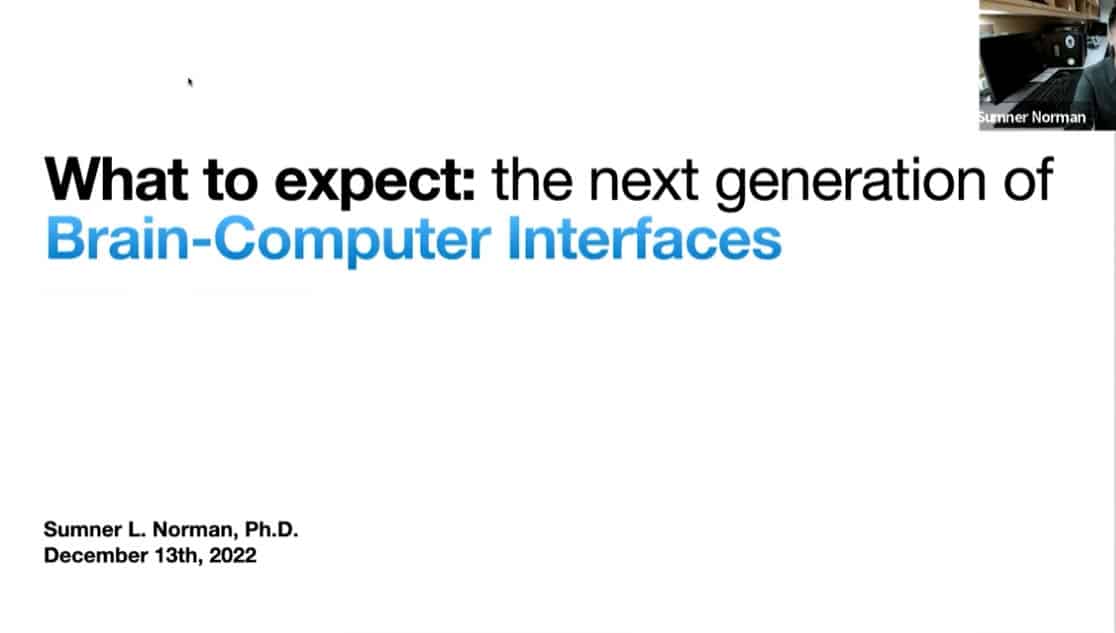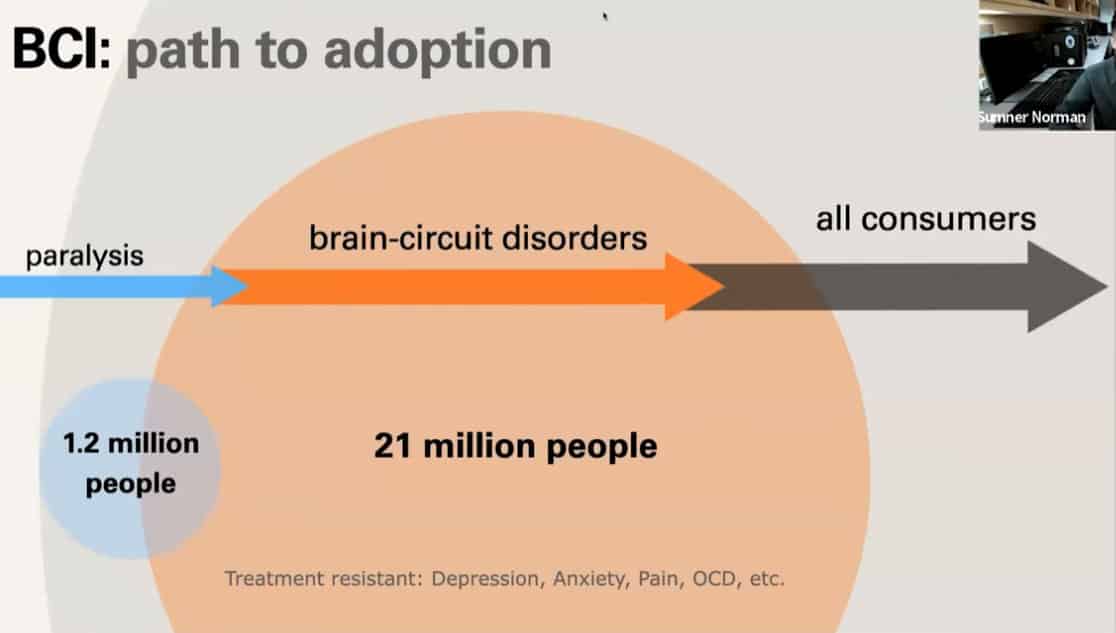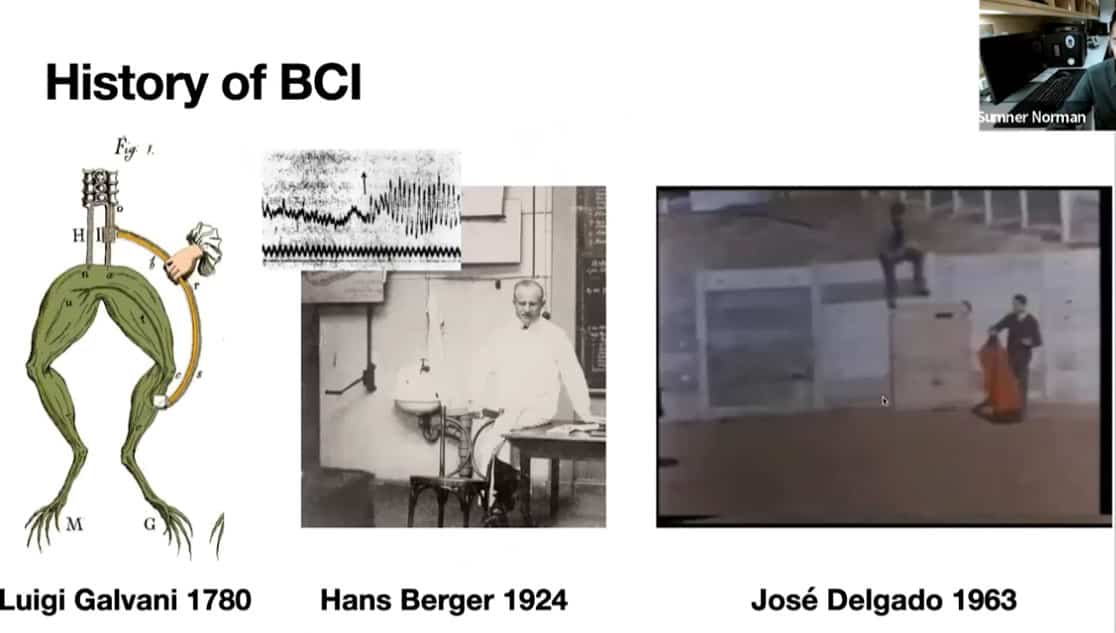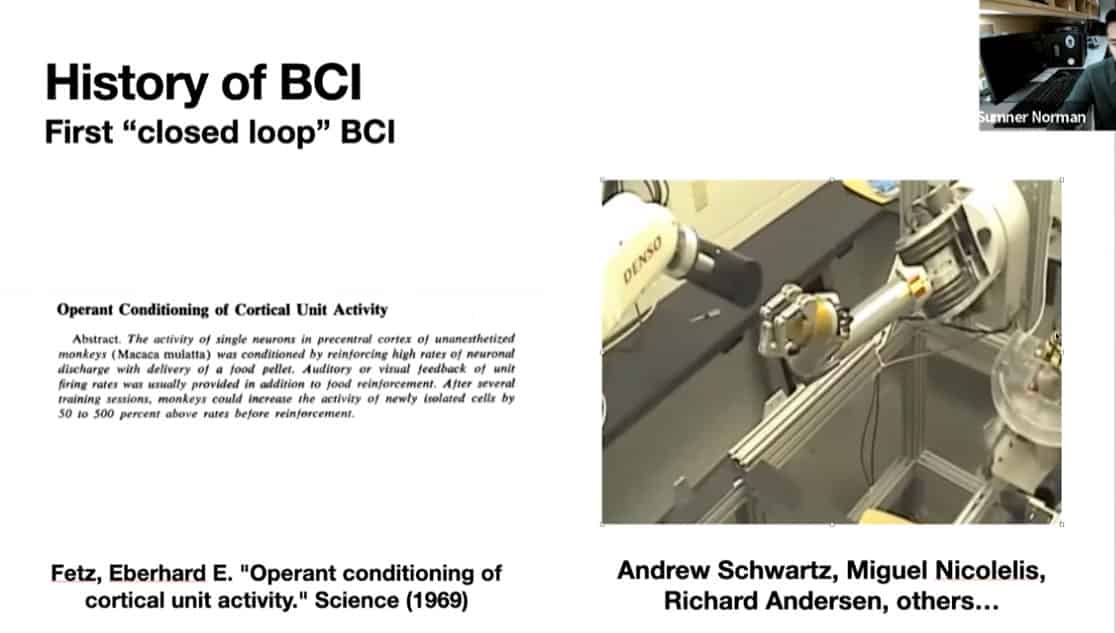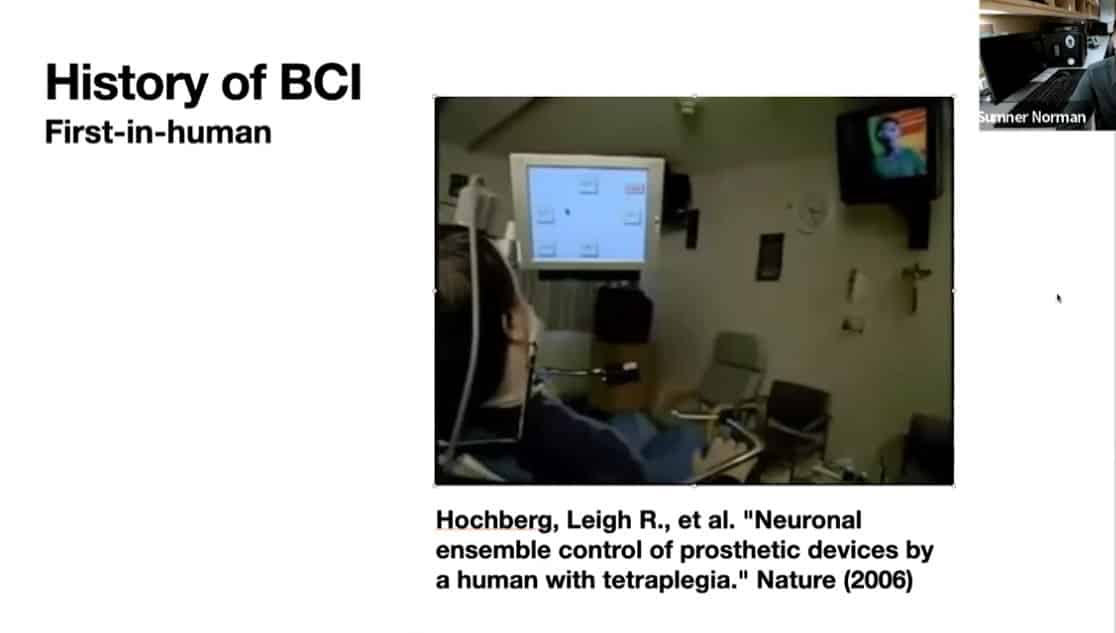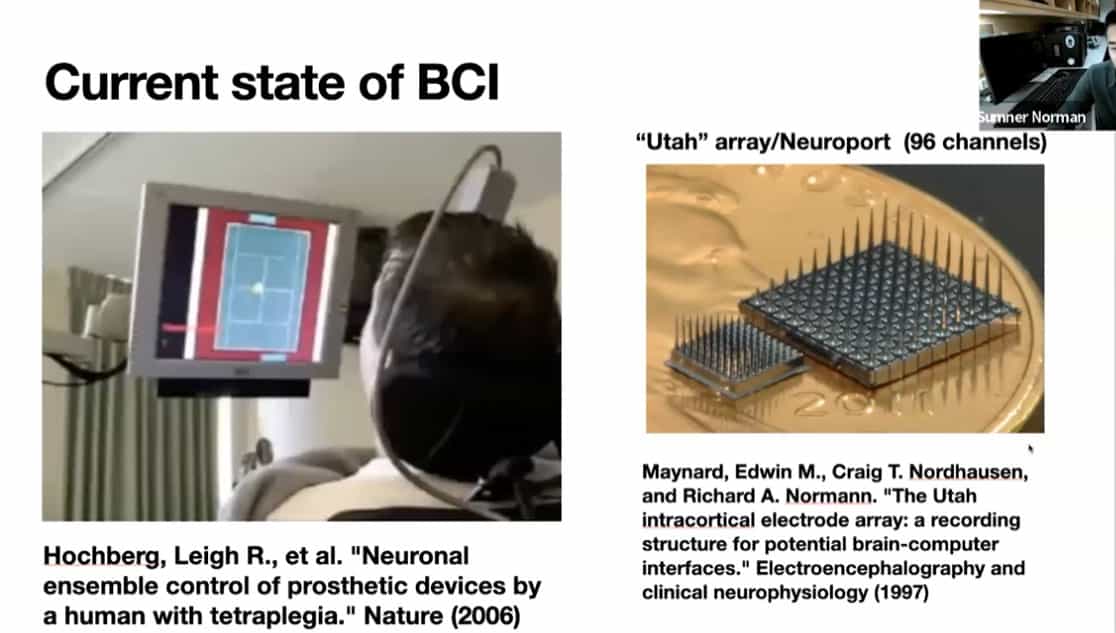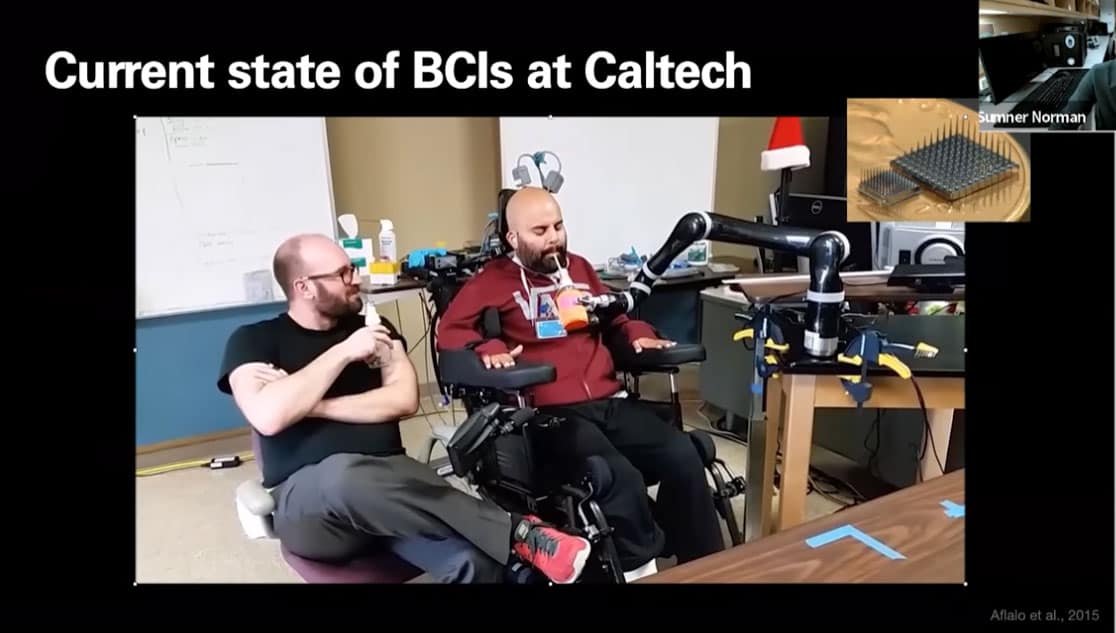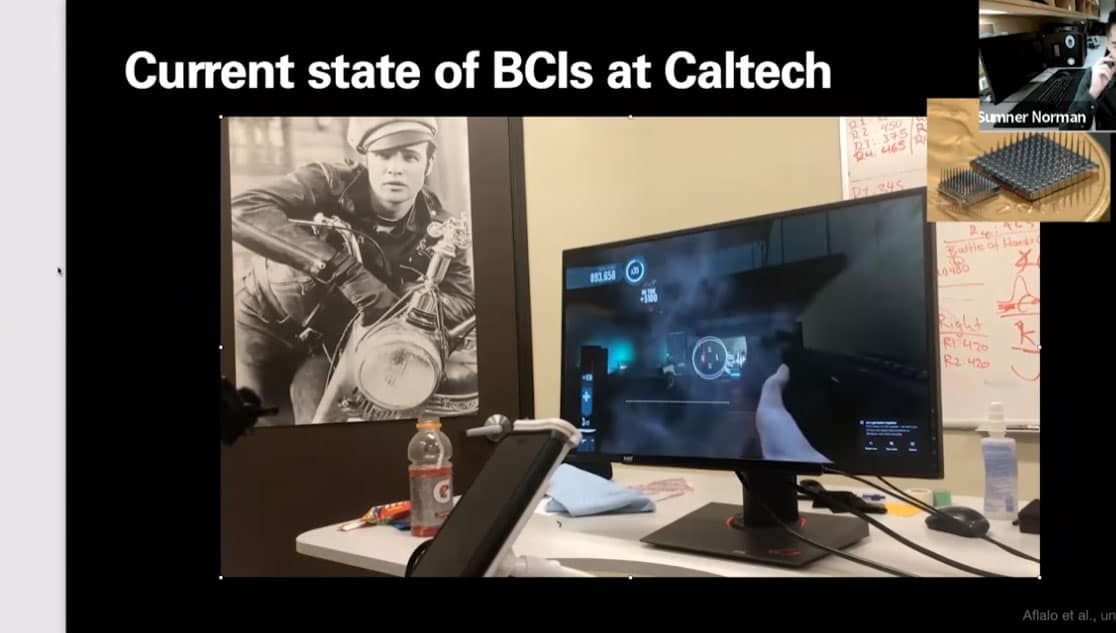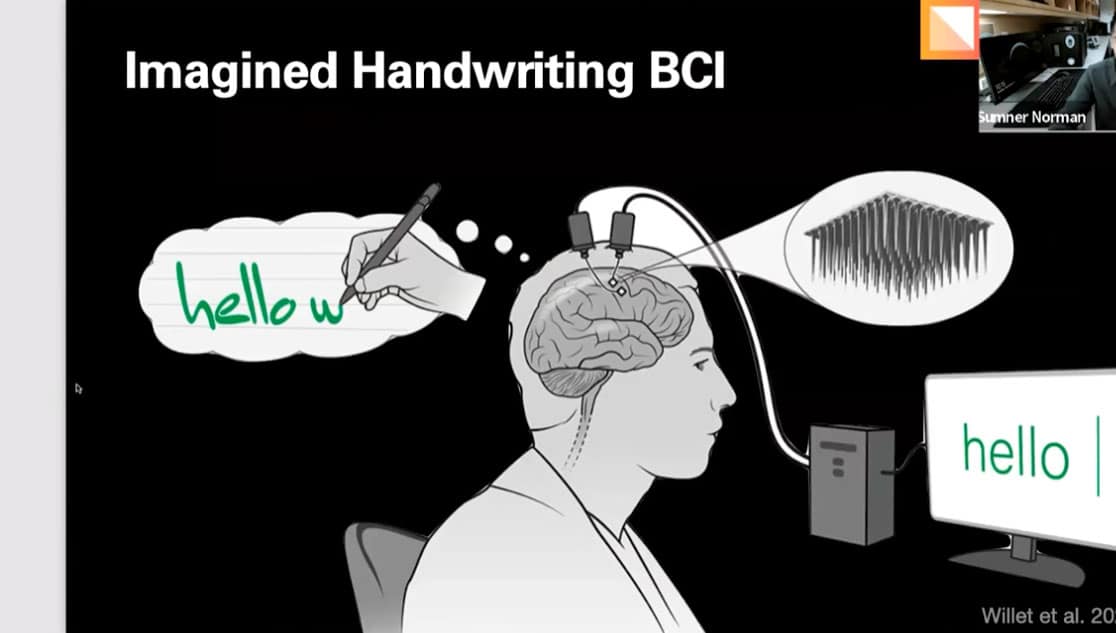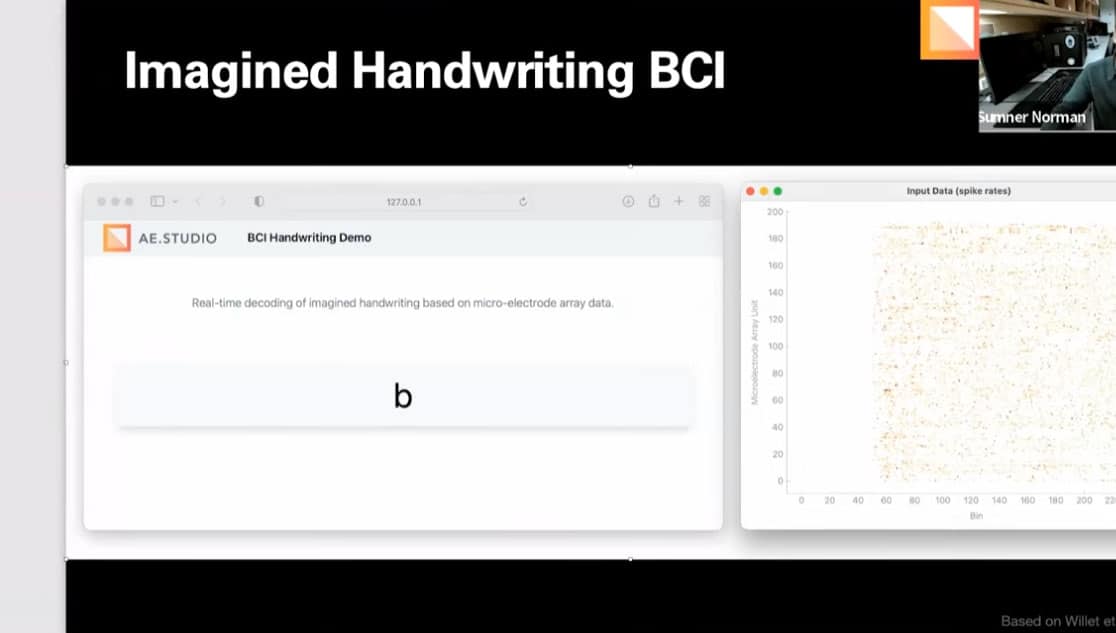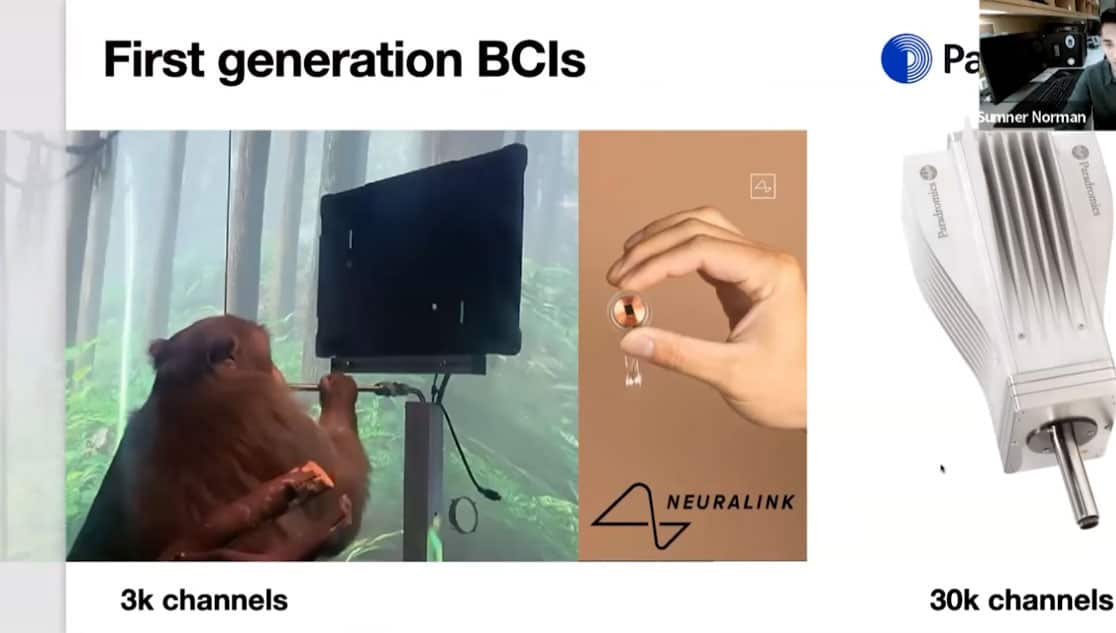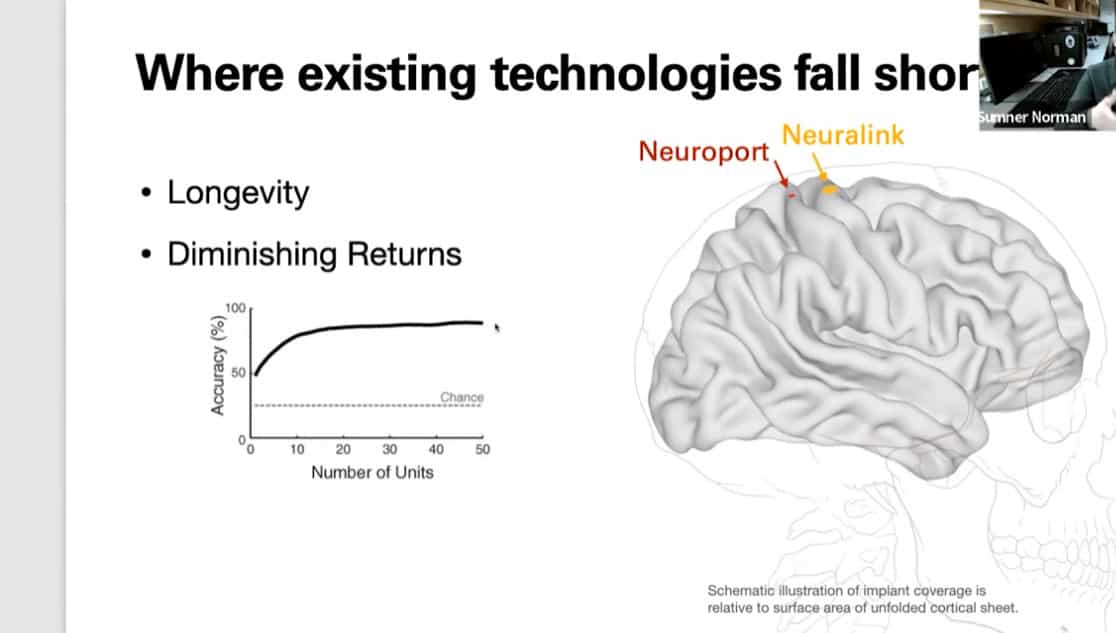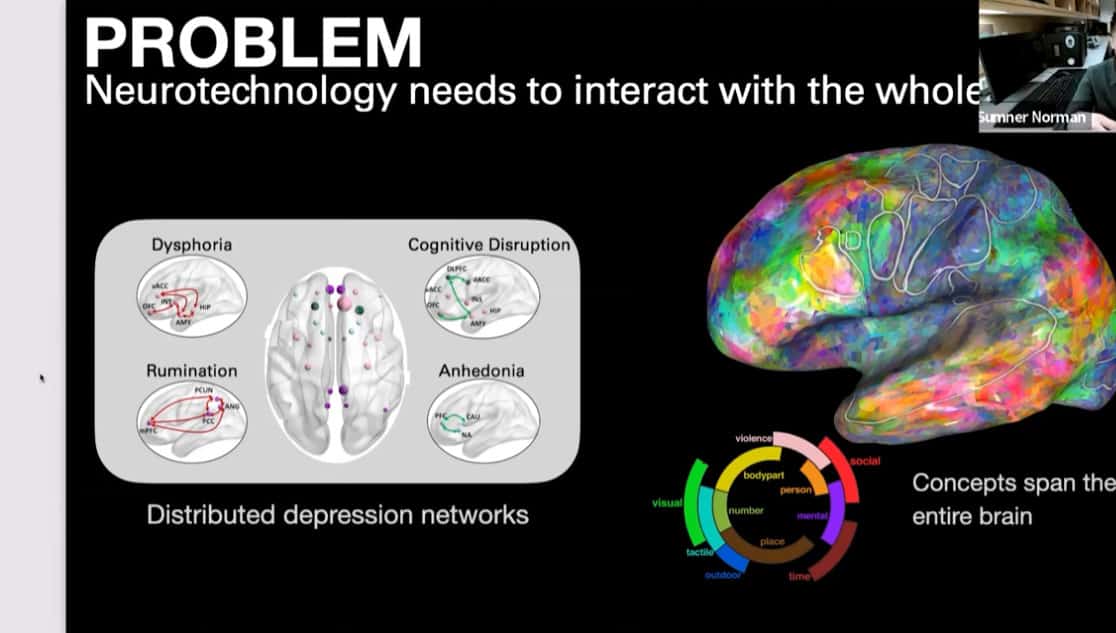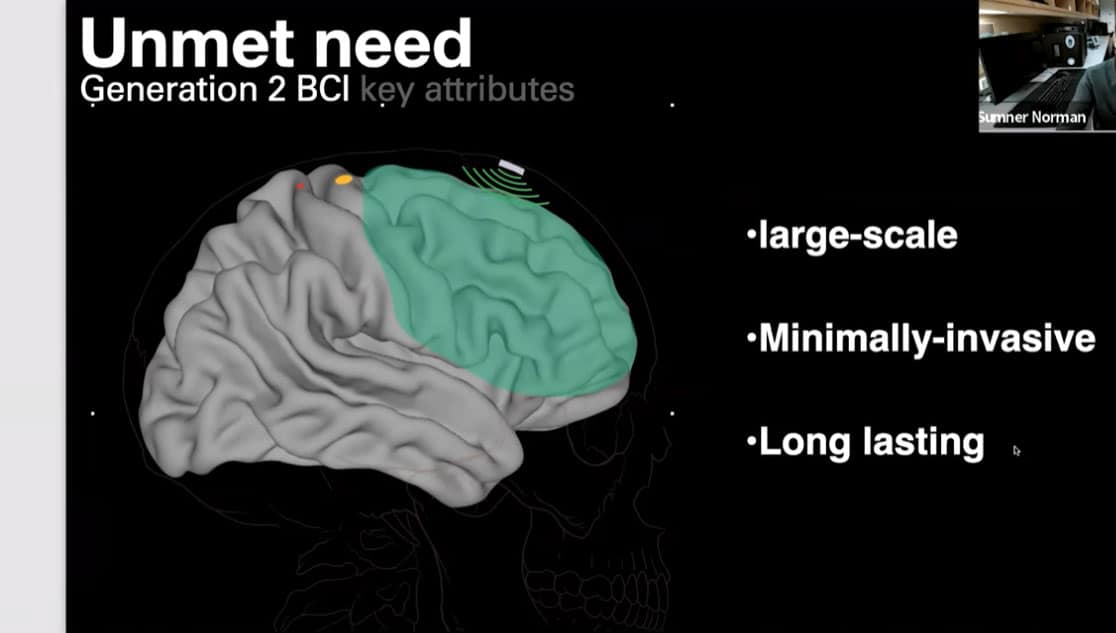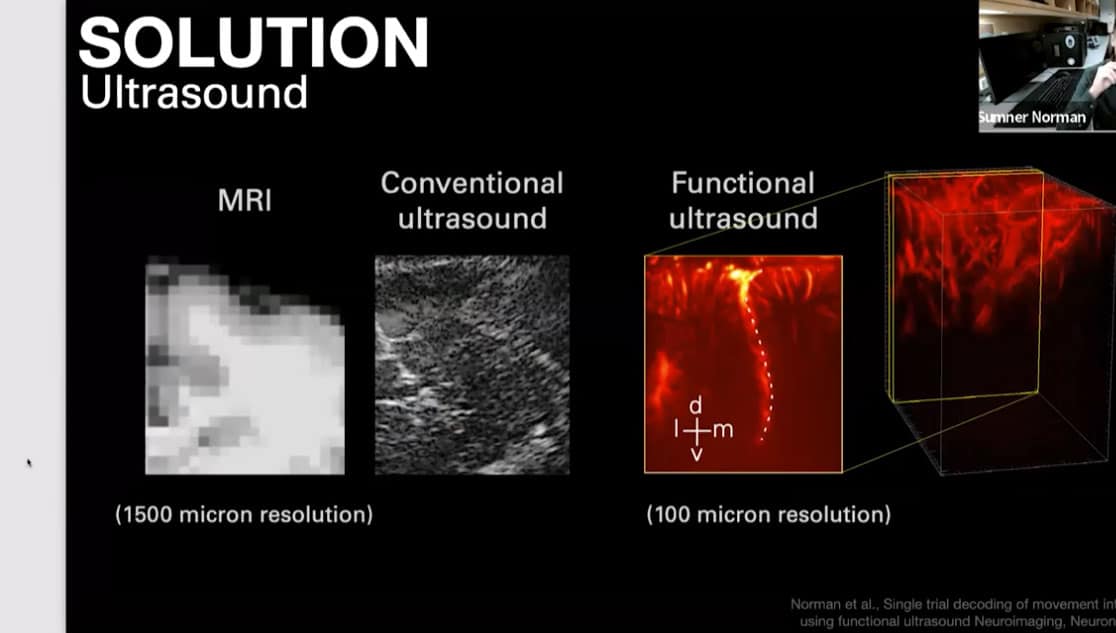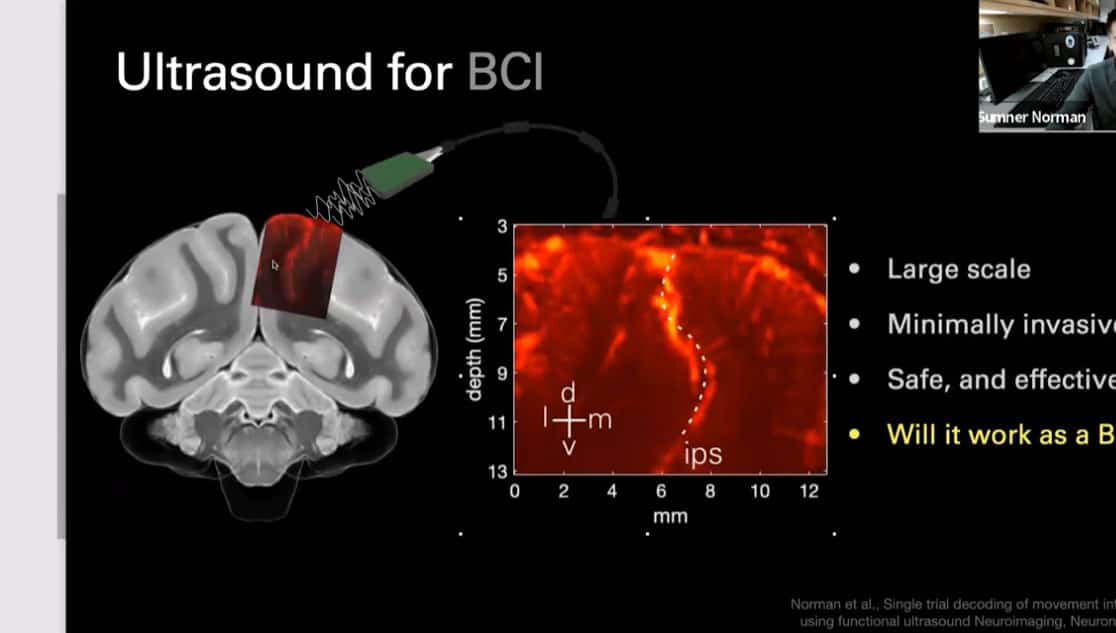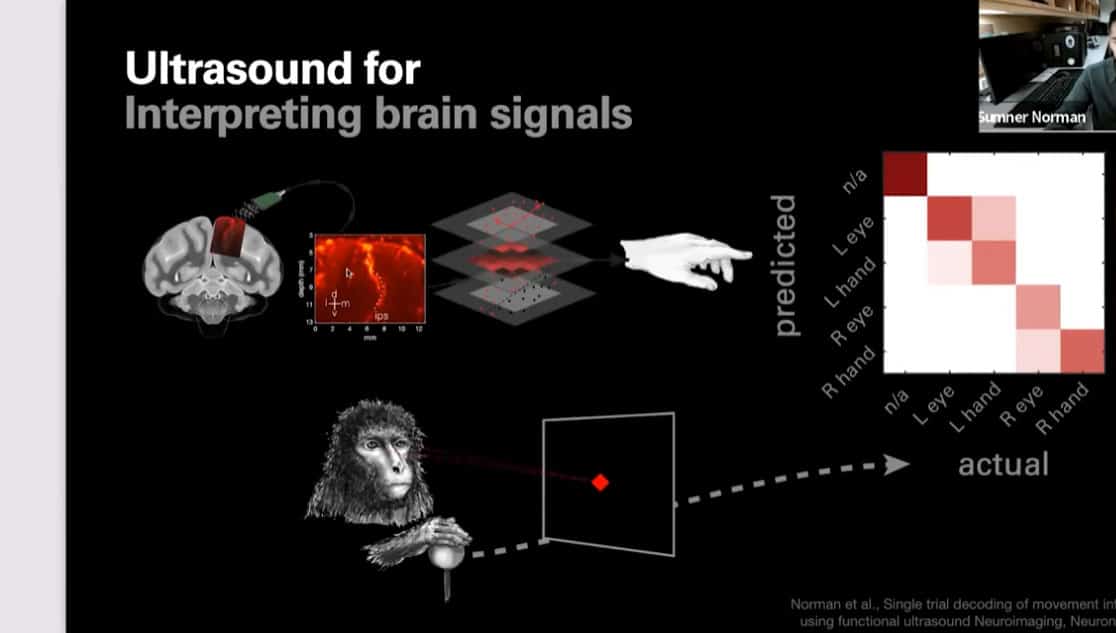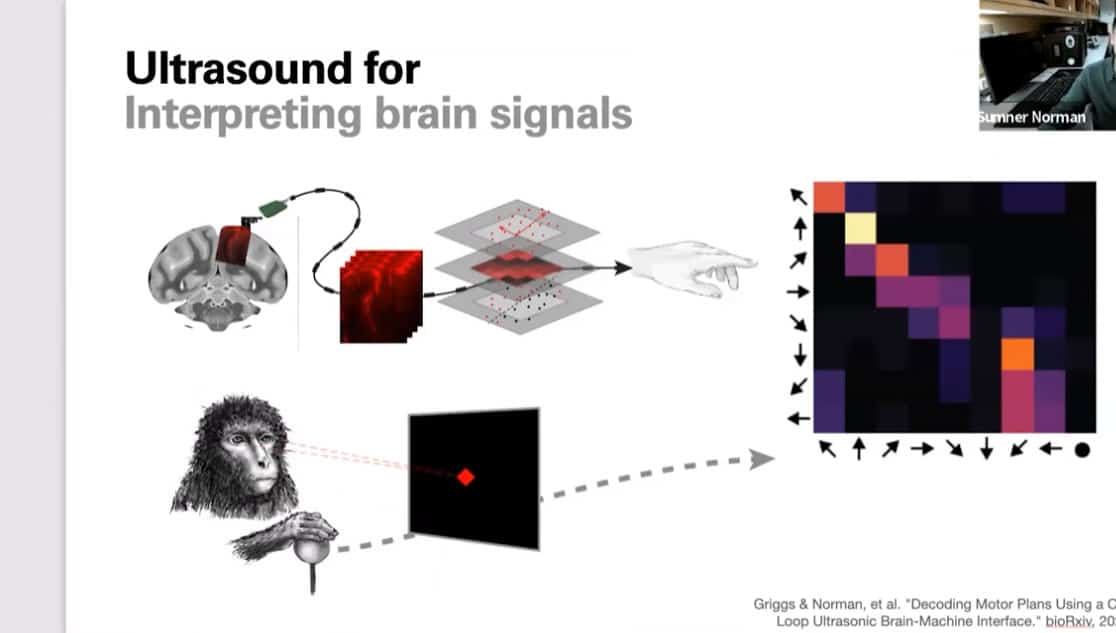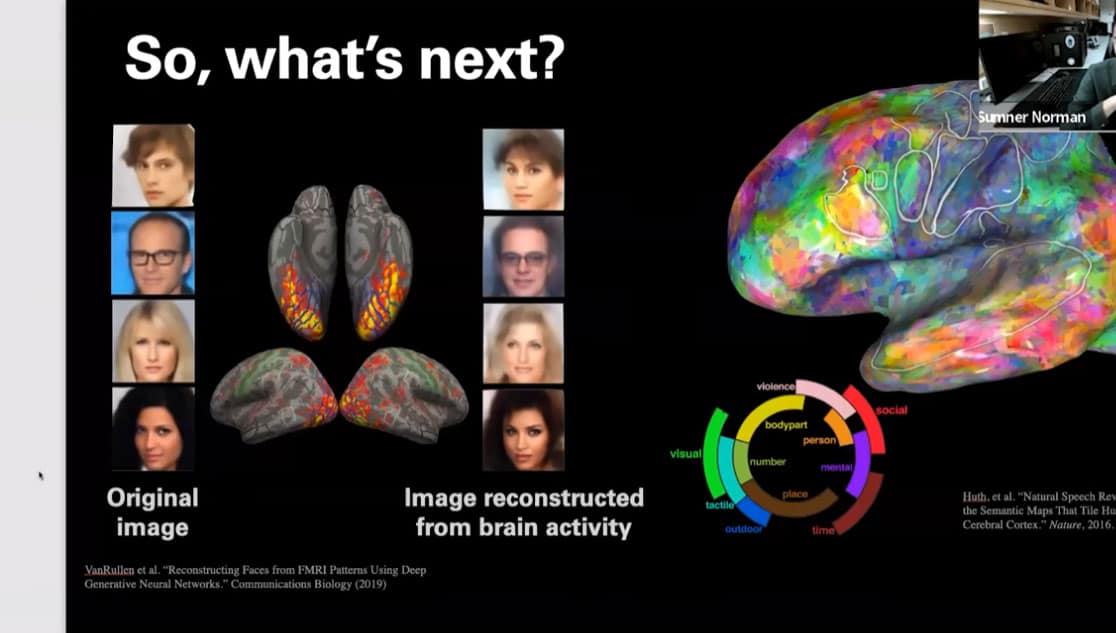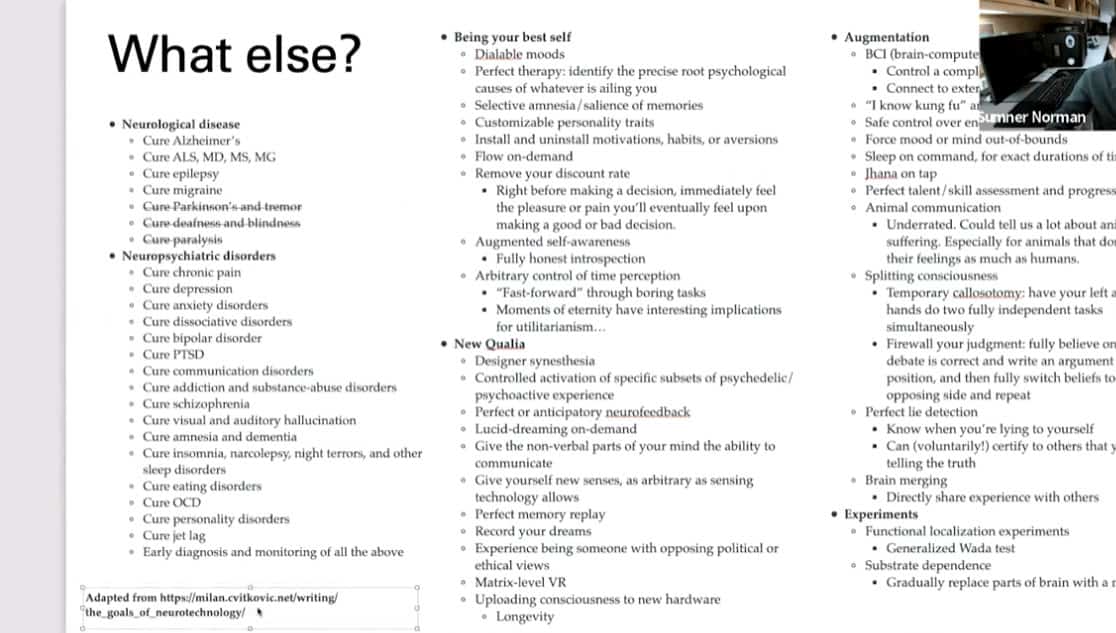Presenter

Sumner Norman
Sumner is a research scientist with a decade of experience designing brain-computer interfaces (BCI) and neuroprosthetics for people with neurological injury or disease. His research has leveraged existing BCI techniques to awaken new pathways in the brain, restoring movement to people with paralysis. More recently, he introduced...
Summary:
Brain computer interfaces have been getting a lot of attention – but what do the next generation of these devices look like? A brain computer interface, or BCI, consists of some kind of brain sensor that feeds information into a decoder to translate into commands. Adoption of these devices could grow exponentially if they can be used to treat depression, anxiety, pain, OCD, and other brain circuit disorders. Current BCI’s can read rudimentary brain activity to allow people to play pong, write words, and play video games. Neuralink has gone a step further and created wireless neural implants that allow the patient to untether themselves from cumbersome machines.
However, the current generation of BCI’s falls short in the categories of longevity and coverage. These devices last around 5 years, and the invasive surgery required to fix the implant is dangerous and probably untenable for most people. They also only cover a very small portion of the brain, less than one half of one percent, so their usefulness is limited.
Sumner proposes that ultrasound might be used to create a BCI that is non-invasive, long lasting, that operates at scale to interact with large swaths of the brain at once. He’s not talking about the ultrasound used for pregnancy tests – a method called functional ultrasound can get down to 100 micron resolution. They detect red blood cell motion and by tracking metabolism they infer neuronal activity. His group has some initial success and believes its possible to use ultrasound to write to the brain along with reading it.
